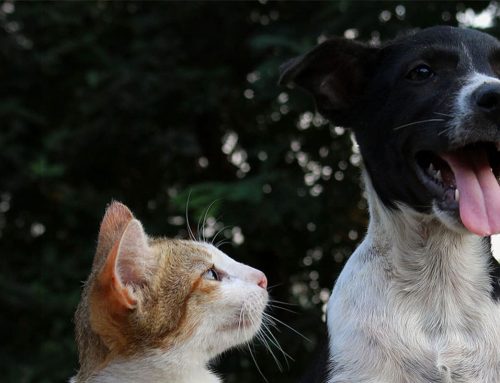Desexing FAQs
What happens to my pet during the proceure?
The operation to desex both female and male dogs and cats is performed under sterile conditions using full general anaesthesia by our experienced veterinary surgeons.
In the female, the abdomen is clipped free of hair, an incision is made along the mid line of the abdomen, and the ovaries and uterus are completely removed by a qualified Vet; this eliminates the possibility of having puppies, prevents her from coming into season, and prevents the development of infections of the uterus later in life.
In the male, the area around the scrotum is clipped free of hair, an incision is made just in front of the scrotum and both testes are completely removed by a qualified vet. This eliminates the source of sperm and, also, the main source of the male sex hormone, testosterone.
Because both procedures are performed under general anaesthesia the animals feel no pain during the operation itself. To ensure your pet has minimal post-operative discomfort, we routinely administer analgesics at the time of desexing.
How long will my pet spend in hospital?
Desexing is a day procedure. Admission times are from 8am until 9.30am and you will be booked a specific time slot to bring your pet into the clinic. Please allow 15 minutes for the admission process. If you cannot bring your pet in on the day and a friend or relative is dropping your pet off, then please come in before and sign all the paperwork. We will contact you after the surgery to let you know of your pet’s progress and to arrange a discharge time.
How do I care for my pet after the surgery?
When your pet goes home, we ask you to keep an eye on the wound and to let us know if there is any problem with the surgery site such as swelling, discharge, or if they manage to chew any of the stitches out. These complications are unlikely but do occasionally occur and we encourage you to contact us if you are concerned. If you think that your pet may lick at the sutures, then we can happily fit an Elizabethan collar.
We also recommend that you do not bathe your dog until after the stitches have been removed.
We advise keeping your pet quiet for several days after discharge. Beyond this, fairly normal activity may then be allowed.
Will my pet have to come back to the clinic for a follow-up appointment?
If we’ve had to used additional methods of suture or suture material that differs to the above, we’ll discuss this with you at discharge time.
What age should my pet be desexed?
In general, the best age to consider dog and cat desexing is at about six months (from 4 months considered for felines, *At veterinary discretion*). At this stage they will have matured reasonably well physically, and be old enough to cope with an elective anaesthetic and surgery, but will not have typically reached an age where a male will have developed many antisocial habits, or a female will have come into season. However, each animal is different and your vet will take into consideration your pet’s breed, weight, vaccination and health status and ability to withstand surgery before advising you on the correct age to desex your pet.
Will my dog be different after being desexed?
Your dog may quieten down a little after desexing, but there will be no fundamental change of character. She or he will still be as good a watchdog as ever.
A desexed dog does not become fat, however the metabolic requirements for food will decrease. In addition, desexing is normally done at an age when a dog’s growth is almost finished; at this stage food requirements will decrease, so it is important to avoid overfeeding and to continue with adequate exercise. We recommend Royal Canin Neutered Food after desexing.
What are the health benefits of desexing?
Desexed females have a greatly reduced incidence of mammary neoplasia and diseases of the ovaries and uterus are eliminated. Testicular tumours in males are eliminated, and there is a reduced incidence of prostate disease, perianal tumours and perineal hernias.
What are the behavioural benefits of desexing?
Desexing can reduce behavioural problems such as roaming and some aggressive behaviour. In cats, desexing stops calling behaviour in queens, reduces spraying in toms, reduces fighting, abscesses and transmission of infectious diseases.










